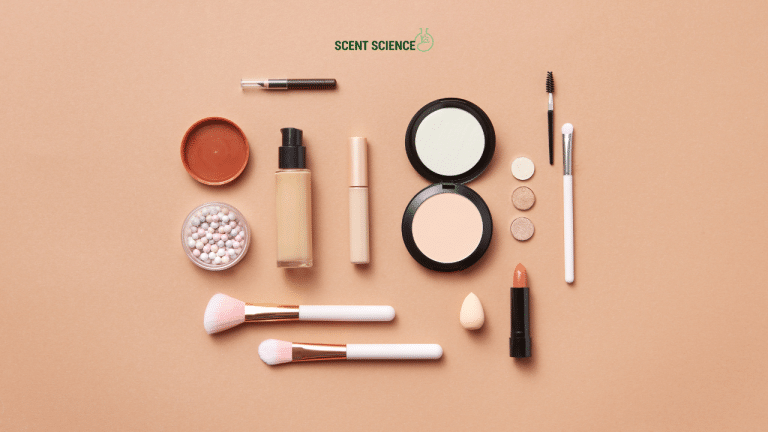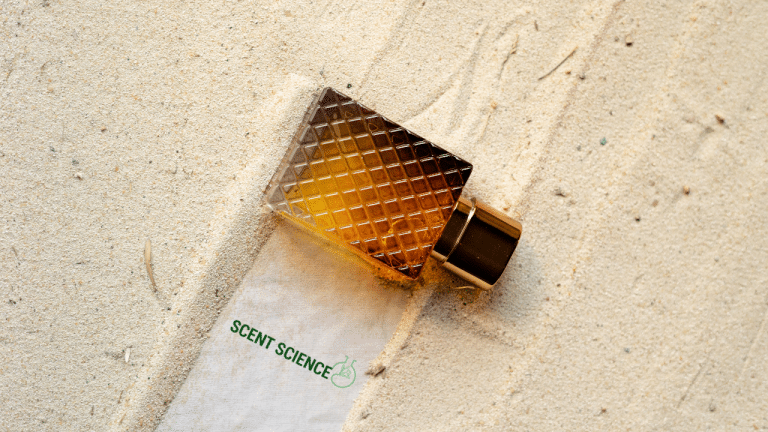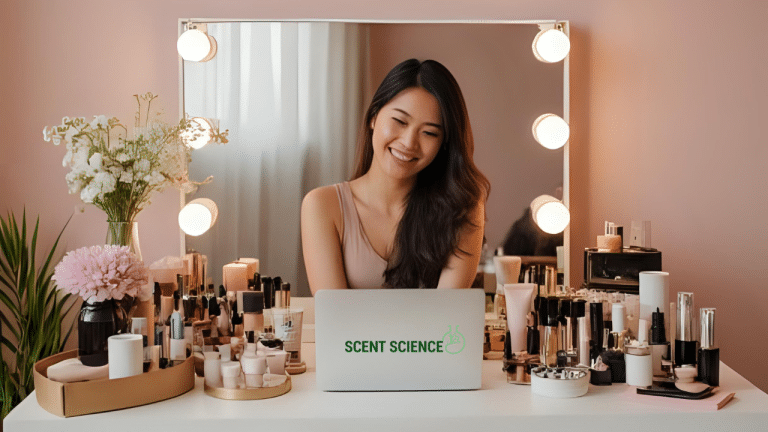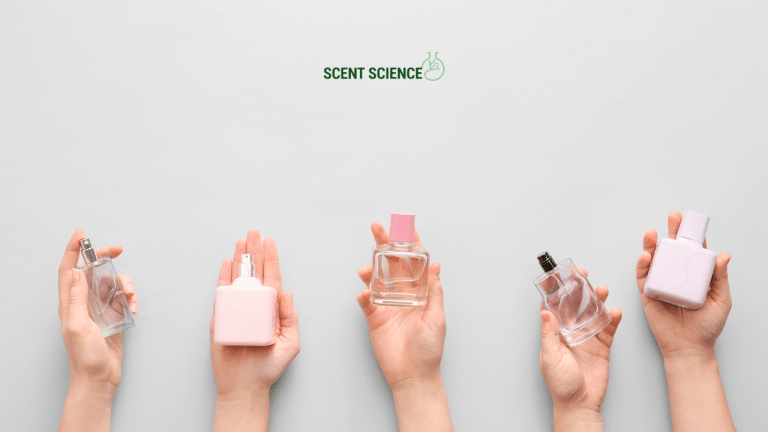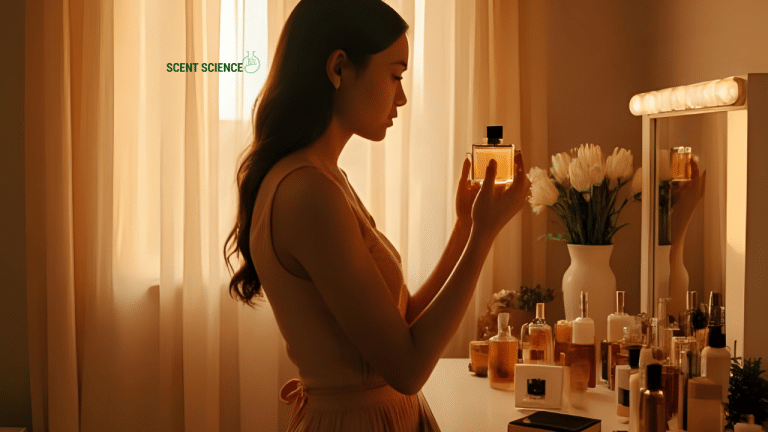In a world where the perfect scent can evoke emotion, memory, and even command confidence, the origins of fragrances are evolving dramatically. The traditional art of perfumery, deeply rooted in natural extracts, is now interwoven with the technological finesse of synthetic fragrances. With the burgeoning advancements in laboratory technology and molecular perfumery, we are poised at an exciting intersection of tradition and innovation. This comparative analysis explores how labs are reshaping the future of scent, bringing with it a blend of technical expertise and creativity like never before.
Table of Contents
ToggleThe New Scent Frontier – An Introduction
The Role of Synthetics in Modern Perfumery
The world of perfumery historically leaned heavily on natural extracts derived from the parts of plants, animals, and minerals. However, relying exclusively on natural ingredients posed significant challenges, such as the variable availability of raw materials and ethical concerns with animal resources. Enter synthetic fragrances—a solution that delivers consistent quality and sometimes even novel scents unattainable through natural means.
These synthetic compounds, crafted diligently in labs and a critical aspect of molecular perfumery, are not only about mimicking nature, but also about introducing new scent dimensions. For instance, the synthetic molecule iso E super is renowned for its velvety nature and the mysterious ability to intensify other fragrance components without overpowering them.
The Science Behind Synthetic Fragrances
Crafting Scents with Precision
The creation of synthetic fragrances requires a meticulous chemical synthesis process where specific compounds are recreated or innovated in laboratories. These lab-created scents aim to either replicate existing natural aromas or develop entirely new scent profiles.
For instance, the synthetic musk, which offers a rich, enveloping aroma, replaces a natural variant that is both difficult to obtain and ethically contentious. According to industry data, 85% of musks used in fragrances today are synthetically produced, underscoring their importance in the industry.

From Organic Chemistry to Olfactory Art
At the heart of synthetic fragrance creation lies organic chemistry. Typically, this involves the manipulation of molecular structures to pinpoint and emulate the exact aroma compounds of a desired scent. Analytical techniques such as Gas Chromatography-Mass Spectrometry (GC-MS) and Nuclear Magnetic Resonance (NMR) spectroscopy stand central to this process. These methods allow for the separation, identification, and quantification of volatiles, facilitating the detailed study and recreation of complex aroma profiles.
Real-World Applications and Industry Standards
Case Studies in Synthetic Perfumery
- Jovan Musk: Launched in 1972, Jovan Musk was one of the pioneering scents incorporating synthetic musks. It capitalized on the chemistry of musk compounds to introduce a fragrance with a pronounced staying power that resonated with consumers.
- CK One: Calvin Klein’s CK One drew international acclaim as a unisex fragrance due, in part, to its innovative use of Ambroxan—a synthetic facet reminiscent of ambergris—which opened the door for new, smellfully neutral yet engaging fabrications.
Industry Standards and Quality Assurance
Regulatory bodies like the International Fragrance Association (IFRA) set stringent guidelines for synthetics to ensure consumer safety while maintaining profound, multifaceted olfactory experiences. Compliance with such standards assures product consistency and protects consumer interests.
Additionally, with an increasing emphasis on sustainability, synthetic fragrances help mitigate the environmental footprint by reducing reliance on scarce natural resources, underscoring their critical role in the industry’s future.
The Economics of Synthetic Fragrances
Cost-Effectiveness and Scalability
Synthetic fragrances drastically reduce costs associated with the harvesting and processing of natural materials, offering notable advantages in both affordability and scalability. This economic feasibility is crucial for streamlined mass production of perfumes that cater to an ever-evolving global market.

A comparative analysis reveals that producing lavender-like scents synthetically, for instance, trims down manufacturing costs by up to 60% compared to the extraction of essential oil from true lavender plants.
Impact on Global Markets
Statistics from market research firms suggest that the global fragrance market, heavily bolstered by synthetics, is projected to reach $91.17 billion by 2025, demonstrating an ambitious growth trajectory driven by the flexibility and innovation of lab-created scents. This growth paints a promising picture, enticing new entrants and encouraging expansion in emerging markets.
Comparative Analysis: Synthetic vs. Natural Fragrances
Technical Breakdown
Composition and Stability
Natural fragrances contain a dizzying complexity of constituents, reflecting the inherent variability of their source materials. Conversely, synthetic fragrances offer fixed compositions that result in improved stability and predictability, a crucial factor for fragrance consistency over time.
Sustainability Considerations
Underpinned by principle advancements, synthetic fragrances epitomize sustainable practices. Reduction of agricultural dependency and deforestation paints a greener future for the fragrance industry, contrasted starkly against traditional practices reliant on natural extracts.
Emotional and Sensory Impact
Some critics argue that synthetic fragrances lack the emotive authenticity of their natural counterparts. Nonetheless, the array of scents achievable solely through synthetic methods has, arguably, crafted a new spectrum of emotive possibilities, providing novel sensory experiences upon which perfumers draw to evoke emotion.

The Future of Scent: Opportunities and Challenges
Innovation and Technological Advancement
Recent innovations, like AI-driven fragrance design, illuminate a future replete with custom, personalized scent offerings. Startups such as “Scentbird” utilize AI to offer scent customization for consumers, a trend indicative of shifting paradigms toward personalized olfactory experiences.
Ethical Implications
While synthetics help bypass ethical dilemmas linked to animal-derived scents, they present new challenges in terms of consumer health and perceptions. Maintaining rigorous regulatory oversight is essential to guard against potential allergenicity and to ensure consumer confidence in synthetic products.
Practical Tips for Navigating Synthetic Scents
- Understand Labels: Investigate fragrance labels to distinguish synthetic compounds used. Transparency aids informed purchasing decisions.
- Personal Preferences: Identify which molecular notes appeal personally, akin to discovering your signature taste in wines or music genres.
- Allergies and Safety: Consult guidelines and physician advice if you have fragrance allergies or sensitivities.
Conclusion
In their journey from laboratories to the marketplace, synthetic fragrances illustrate how scientific precision marries the evocative art of scent-making. As labs continue to push the envelope of molecular perfumery, the practical implications of these innovations manifest not only as potential competitive advantages for brands but also as enriched consumer experiences. 📈
For perfumery enthusiasts and industry professionals alike, exploring lab-created scents is akin to unlocking a multisensory tapestry—where each scent note is a thread intricately woven for richness, complexity, and life-enhancing delight. As we forge ahead, the future of fragrance undoubtedly lies in harnessing the endless possibilities that synthetic fragrances afford, enabling the creation of scents that embody the art of the possible.
Frequently Asked Questions
What are the benefits of using a hair mask in my hair care routine?
Using a hair mask can provide several benefits, including hydration, smoothing, strengthening, curl definition, heat protection, and damage repair. Hair masks infuse the hair with moisture, help coat the hair shaft to seal split ends, reduce breakage, and protect the hair from heat styling and environmental damage[1][4].
What ingredients should I look for in a hair mask?
Effective hair masks often include ingredients such as coconut oil, argan oil, shea butter, honey, avocado oil, green tea, and coconut water. These ingredients provide nourishment, moisturize, and protect the hair, offering benefits like softening, moisturizing, and protecting against damage[2][5].
How often should I use a hair mask in my routine?
You should use a hair mask whenever your hair feels dry, unmanageable, or in need of intense hydration. This can vary depending on your hair type and needs, but generally, using a hair mask once or twice a week can help maintain healthy and moisturized hair[1][4].
How do I apply a hair mask for the best results?
To apply a hair mask effectively, shampoo your hair first, then apply the mask, focusing especially on the ends where hair tends to be the most damaged. Leave the mask on for anywhere from 10 minutes to overnight, depending on the type of mask and your hair’s needs[1][4].
References


